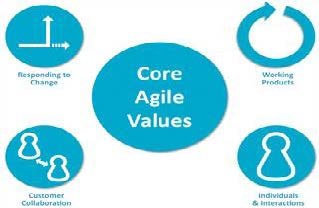1. In the past, in many big organisations, the organisational culture did not provide sufficient impetus for the people at the working level to take Quality Management systems seriously. However, in the last few decades, this trend has been reversing and especially, people at the leadership position have started recognising its importance and its enormous potential for helping to meet the organisational objectives. Three decades of working in the Petroleum Industries have provided me the insight of evolution of the Management Systems in this industry. Top Management have started giving more emphasis on Quality Management Systems with clear commitment to make it happen all across the organisation. In most companies, this change started with assigning the responsibility of managing entire QMS to say, one individual. Subsequently, it has grown to a section, then to a department and now, in most successful companies, it has become a part of their organisational culture. Earlier, people looked at QMS and its compliance requirements as a burden and a hindrance to their normal work. Now, many have experienced the benefits which came out of it and has consider it as an essential requirement.
2. In Petroleum industry, where people are working in an extremely hazardous environment, complying to the standards of QMS often helps in reduction of accidents and avoiding occurrence of emergency situations. It is more relevant for the people working in the Process plants, Tank farms, despatch locations, shop floors.
3. Commitment from the leadership is absolutely essential to maintain this work culture within the organisation. It is human tendency to take short cuts and unless certain checks and balances are introduced, monitored and corrective action taken, every system introduced will get diluted over a period of time. Here comes, importance of leadership commitment. Top management needs to review the status and progress of QMS periodically and corrective action to be taken for any deviations.
4. The classical Plan-Do-Check-Act(PDCA) showed leadership to be responsible at clause 5 of Quality Management System(QMS) ISO 9001:2008. With the revision of QMS to the current version ISO 9001:2015 and integration of QMS to Environment Management System(EMS) ISO 14001:2015 and Occupational Health and Safety Management System(OHSMS) ISO 45001:2018, the leadership had become a driving force in all the aspects of these standards.
5. In the latest edition of ISO 9001:2015, the leadership is shown as the central element in the new PDCA Cycle. You may refer the representation of it on the next page. A similar but simplified cycle given in EMS and OHSMS also shows leadership to be the epicentre of all activities.

6. In the environment of the Integrated Management System(IMS) Clause 5 is providing details of Leadership and clause 5.1 continues to essay the aspects of Leadership and commitment. Let’s make a ready reckoner across all three standards pertaining to Clause 5.
Clause 5 across Management Standards
| Clause | ISO 9001:2015 | ISO 14001:2015 | ISO 45001:2018 |
| 5.0 | Leadership | Leadership | Leadership and worker participation |
| 5.1 | Leadership and Commitment | Leadership and Commitment | Leadership and Commitment |
| 5.1.2 | Customer Focus | —- | —- |
| 5.2 | Policy | Environmental policy | OH&S policy |
| 5.2.1 | Establishing the Quality Policy | —- | —- |
| 5.2.2 | Communicating the Quality Policy | —- | —- |
| 5.3 | Organizational roles, responsibilities and authorities | Organizational roles, responsibilities and authorities | Organizational roles, responsibilities and authorities |
| 5.4 | —- | —- | Consultation and participation of workers |
7. Top Management demonstrated its leadership and commitment for the development and implementation of the management systems. The important considerations in the implementation strategy are as follows:
- Taking accountability of the effectiveness of the integrated Quality, Environment, Health and Safety (QEHS) Management System;
- Taking overall responsibility and accountability for the prevention of work related injury and ill health as well as the provision of safe and healthy work places and activities ;
- Ensuring that the QEHS Policy and objectives are established for the management system and are compatible with the strategic direction and the context of the organization;
- Ensuring that the integration of the QEHS Management system requirements into the organizations business processes;
- Ensuring that the QEHS Policy is communicated, understood and applied within the organization and is available to relevant interested parties as appropriate;
- Promoting awareness of the process approach and risk based thinking;
- Ensuring that the resources needed for the management system are available;
- Communicating the importance of effective integrated management and of conforming to the management system requirements;
- Ensuring that the management systems achieves its intended results;
- Engaging, directing and supporting persons to contribute to the effectiveness of the management system;
- Promoting continual improvement;
- Supporting other relevant management roles to demonstrate their leadership as it applies to their areas of responsibility.
- Ensuring that the management systems nonconformities and opportunities are identified, and action is taken to improve the performance of the organization;
- Protecting workers from reprisals when reporting incidents, hazards, risk and opportunities
- Establishing processes for consultation and active participation of workers in the process of continual improvement and identify and remove obstacles and barriers to participation;
- Promote a positive culture in the organization;
- Support the purchase of energy efficient products and services, design for energy performance improvements.
8. Showing Leadership Commitment in integrated Quality, Environment, Health and Safety (QEHS) Management System The process of implementation of transition to 2015 version of QMS, EMS and from OHSAS 18001:2007 to OHSMS 45001:2018 involved a dedicated team effort. The integration of all the three standards to provide a single integrated QEHS Management System was done with high level of professionalism. All seven Quality Management Principles were weaved in to the system with clear understanding of all clauses of the International Standards and customer focus to ensure continual improvement. In the process, the top management believed in customer focus and customer obsession became the driving spirit.







